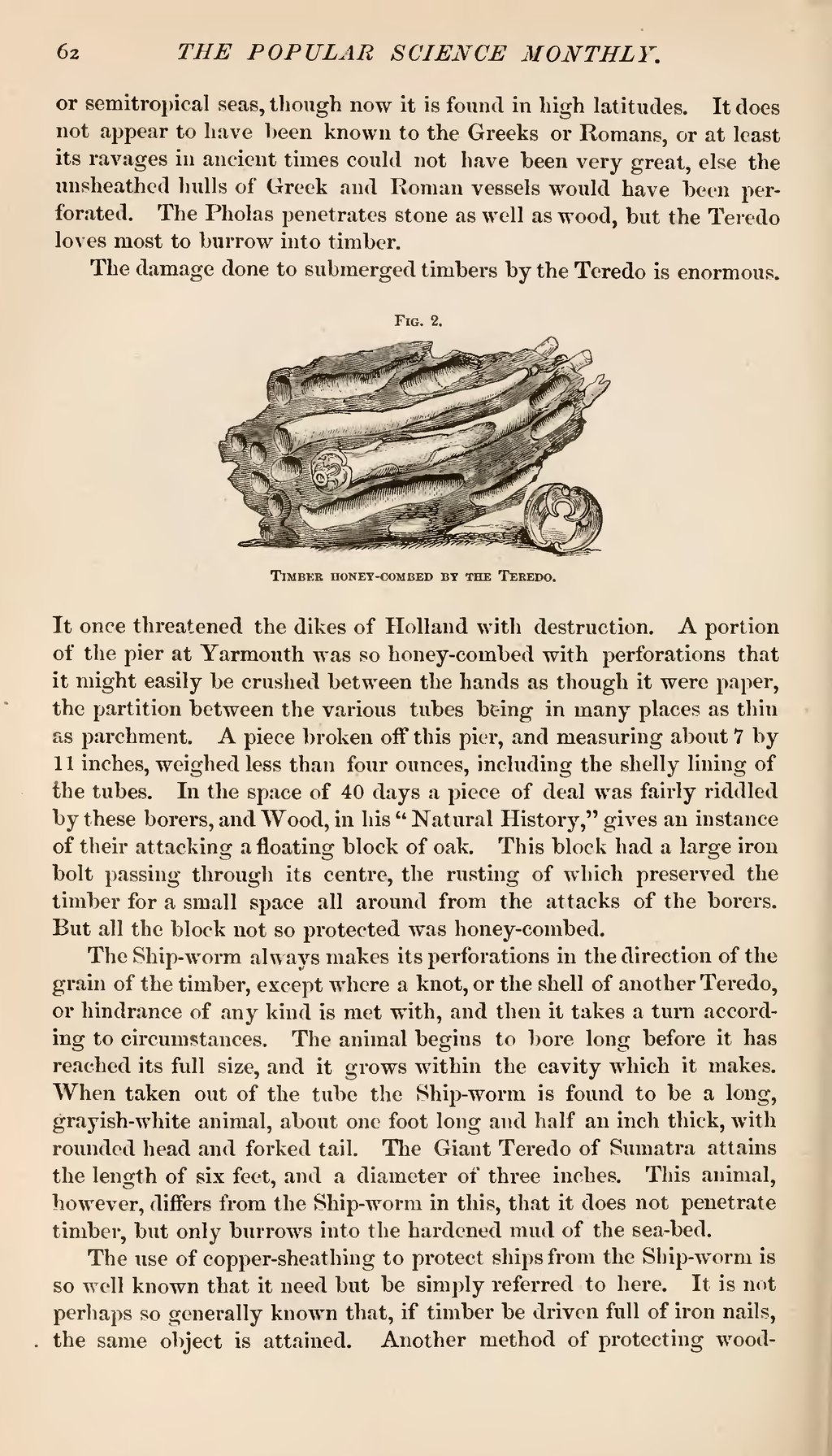or semitropical seas, though now it is found in high latitudes. It does not appear to have been known to the Greeks or Romans, or at least its ravages in ancient times could not have been very great, else the unsheathed hulls of Greek and Roman vessels would have been perforated. The Pholas penetrates stone as well as wood, but the Teredo loves most to burrow into timber.
The damage done to submerged timbers by the Teredo is enormous. It once threatened the dikes of Holland with destruction. A portion of the pier at Yarmouth was so honey-combed with perforations that it might easily be crushed between the hands as though it were paper, the partition between the various tubes being in many places as thin as parchment. A piece broken off this pier, and measuring about 7 by 11 inches, weighed less than four ounces, including the shelly lining of the tubes. In the space of 40 days a piece of deal was fairly riddled by these borers, and Wood, in his "Natural History," gives an instance of their attacking a floating block of oak. This block had a large iron bolt passing through its centre, the rusting of which preserved the timber for a small space all around from the attacks of the borers. But all the block not so protected was honey-combed.
The Ship-worm always makes its perforations in the direction of the grain of the timber, except where a knot, or the shell of another Teredo, or hindrance of any kind is met with, and then it takes a turn according to circumstances. The animal begins to bore long before it has reached its full size, and it grows within the cavity which it makes. When taken out of the tube the Ship-worm is found to be a long, grayish-white animal, about one foot long and half an inch thick, with rounded head and forked tail. The Giant Teredo of Sumatra attains the length of six feet, and a diameter of three inches. This animal, however, differs from the Ship-worm in this, that it does not penetrate timber, but only burrows into the hardened mud of the sea-bed.
The use of copper-sheathing to protect ships from the Ship-worm is so well known that it need but be simply referred to here. It is not perhaps so generally known that, if timber be driven full of iron nails, the same object is attained. Another method of protecting wood-


